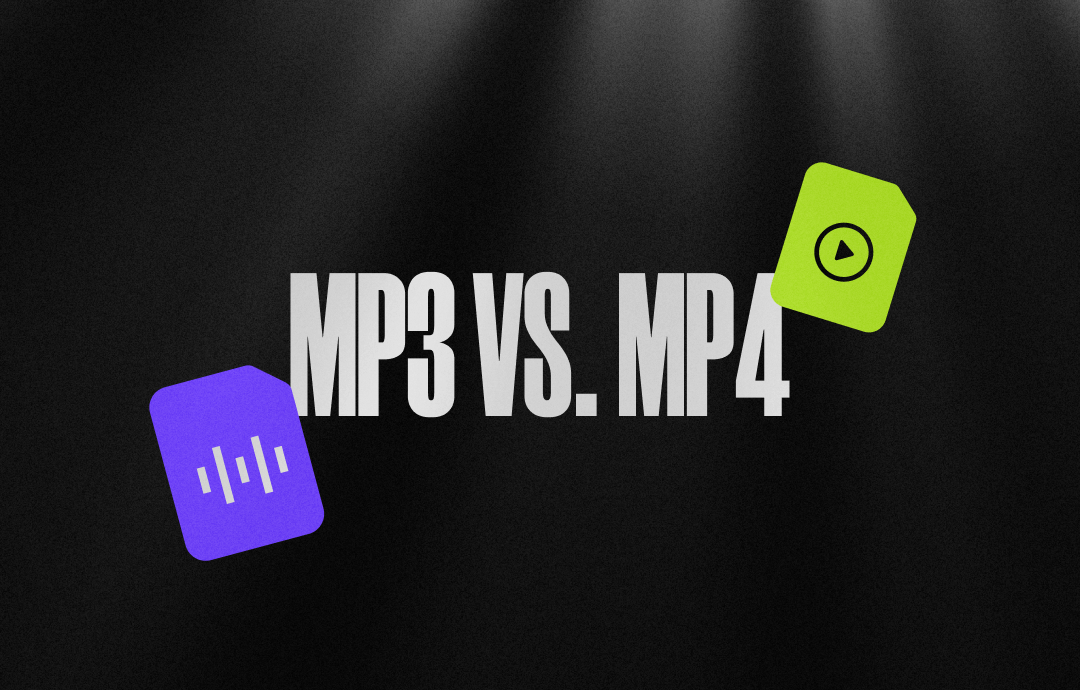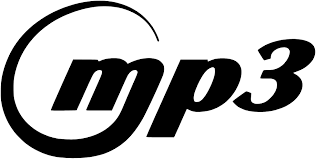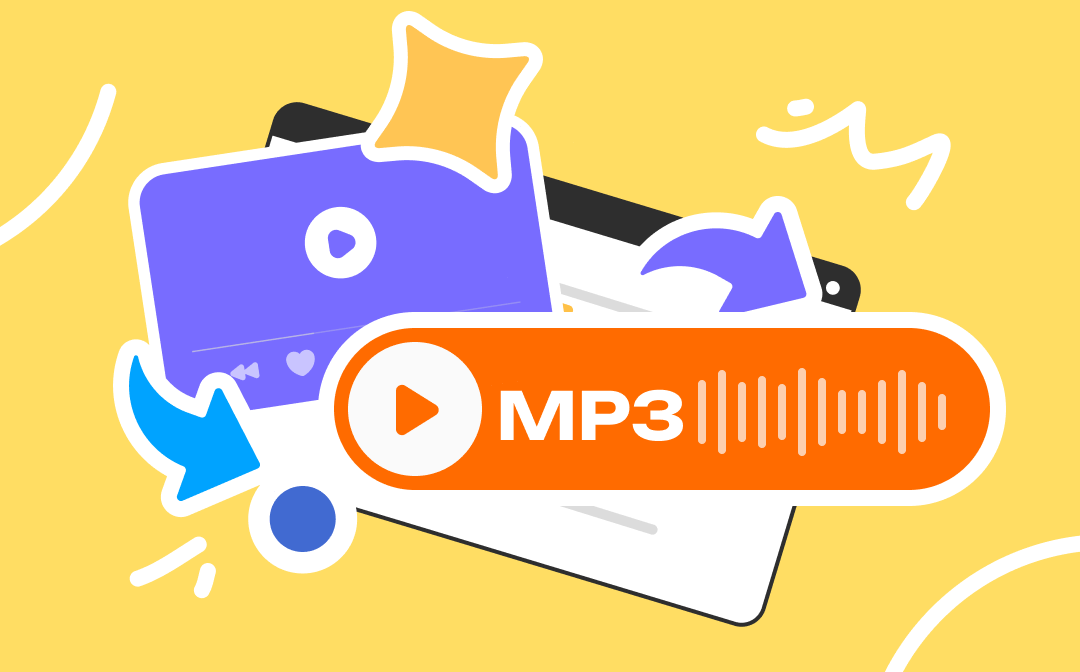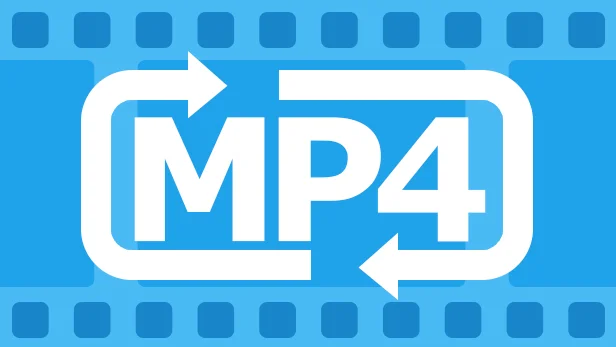
The multimedia container MP4 file format gains popularity by storing all types of media content, including audio, video, text, and subtitles, while reducing the file size without compromising content quality. In this article by AWZware, we will walk you through all the details of MP3 vs. MP4. Let's dive in!
What is MP3?

MP3, formerly known as MPEG-1 Audio Layer 3/ MPEG-2 Audio Layer 3, is a coding format to store digital audio data. This audio file format uses a lossy data compression process to encode MPEG-1/ MPEG-2 audio data. To reduce the file size, MP3 compresses the audio data by eliminating a certain component that doesn't impact the audio quality of the human hearing experience.
This compression process is referred to as psychoacoustic modeling or perceptual coding. MP3 encoded audio data with a consistent bit rate of 128 kbit/s, resulting in a 95% reduction in file size compared to CD audio size. While maintaining the same CD audio quality, MP3 consumes 9% of the storage of the original CD audio.
Common Uses
- Store large-size audio from a CD into a hard drive by converting it into a compressed MP3 file
- Download and store MP3 audio files from websites for offline listening
- Store millions of audio content in one drive
- MP3 files are easily shareable with other internet users
- The podcast has been created in MP3 format
Advantages
- Reduced file size is easy & quick for online streaming and sharing
- MP3 files are compatible with all media players, OS, and media-sharing platforms
- Fast and smart uploading and downloading of small MP3 file size
- MP3 is perfect for portable devices with less storage space
- Free file format with metadata, adding an ID tag compatibility option for smart searching and ensuring ownership of the audio content
Limitations
- It reduces the audio quality
- It's a lossy format
- MP3 has a limited dynamic range for music recording
- Limited flexibility for audio editing or post-production
- The bit rate is restricted to 320 kbps

Convert Video to MP3 on Windows, Mac, iPhone, Android | Free
This guide will show you how to convert video to MP3 on Windows, Mac, iPhone, and Android phone, including the method to convert video to MP3 online.
READ MORE >What is MP4?

MP4, or MPEG-4 Part 14, is a digital multimedia container format that stores video, audio, and other media content, including images, subtitles, etc. MP4 also lets you enjoy streaming, downloading and shading video content online. This container file format is compatible with most of the devices.
It compresses the file size and offers transcoding to change the video format using its encoding process. Despite using a lossy compression process, it compresses the audio and video components separately to provide high video quality after compression.
Common Uses
- It is mainly used to stream, download, and share audio-video content
- Store large size video in small device's storage with DVD quality
- It is helpful for post-production and compatible with most video editing
- It works with multiple streaming protocols
- It is mainly used for video marketing and advertising to ensure maximum reach and engagement.
- It has widened support in storing content for both the video hosting platforms and the user’s device.
Advantages
- MP4 is compatible with all OS, devices, and most media players
- It offers small file size with extensive codec support
- It works with HTML5 to embed videos in various web pages
- It offers 3D supports
- It helps in e-learning and training with multiple audiovisual element support.
- It lets you combine multiple audio, video, and other elements in one single format.
Disadvantages
- It involves lossy compression that affects video quality
- It consumes more computer power to process both audio and video data
- Metadata can be removed easily in the MP4 file
- Highly compressed files are difficult to edit
- During playback, audio can go out of sync
- It needs a specific codec to play an MP4 file
The difference between MP3 and MP4
To discuss MP3 vs MP4, you should understand some fundamental differences between these two universal media file formats. Here's a comparison chart which can help you discriminate between the primary purposes of these two formats:
|
Factors |
MP3 | MP4 |
|---|---|---|
| Audio vs Video Compatibility | Being an encoding format MP3 is compatible with only audio content | MP4, as a container format, supports both audio and video. You can store only audio using MP4 format. |
| Compression & Quality | Lossy compression with CD-audio quality with unrecognizable audio data reduction. | Lossy compression with DVD quality video and the compressed MP4 file is easily streamable, downloadable and shareable to all devices & platforms |
| File Size | File size gets reduced by 10 to 15% as compared to the original file size. The file size depends on the compression ratio & file bit rate. | Being a container format, MP4 contains files that use various compression processes that determine the file size. |
| Compatibility | MP3-supported devices can play only audio content | MP4-supported devices can play both audio-video content |
| Used Extensions | Only .mp3 | .mp4, .m4a, .m4b, .m4p, .m4v, & .m4r |
Considering factors to choose from MP3 and MP4
Before choosing an MP3 or MP4 format to stream, store, or share your favorite media content, you must consider some parameters beforehand to meet your specific requirements.
- Video streaming or audio listing purpose: If you want to listen to your favorite playlist, audiobooks, music, podcast, etc. while traveling or driving, then MP3 is perfect for you. On the other hand, to enjoy movies, music videos, series, etc., MP4 is the best option.
- Device Storage: If you have limited device storage to save your favorite media content, MP3 takes less space than Mp4.
- Editing Purpose: If you want to edit your media content, MP4 gives more flexibility in editing than MP3, and therefore you can also store any audio file in MP4 format for further editing.
- Device Compatibility: If your device or media player supports only MP3, you can't play MP4 files on it. However, an MP4-supported device can handle both audio and video files. Therefore, you can play MP3 files on an MP4-compatible device.
Conclusion
So, while streaming, sharing, or saving your desired media content, if you get confused about selecting the suitable media file format, this article will solve your problem very simply. Make the most out of these two file formats by analyzing the various factors between MP3 vs. MP4 according to your requirements.






 AWZ Screen Recorder
AWZ Screen Recorder